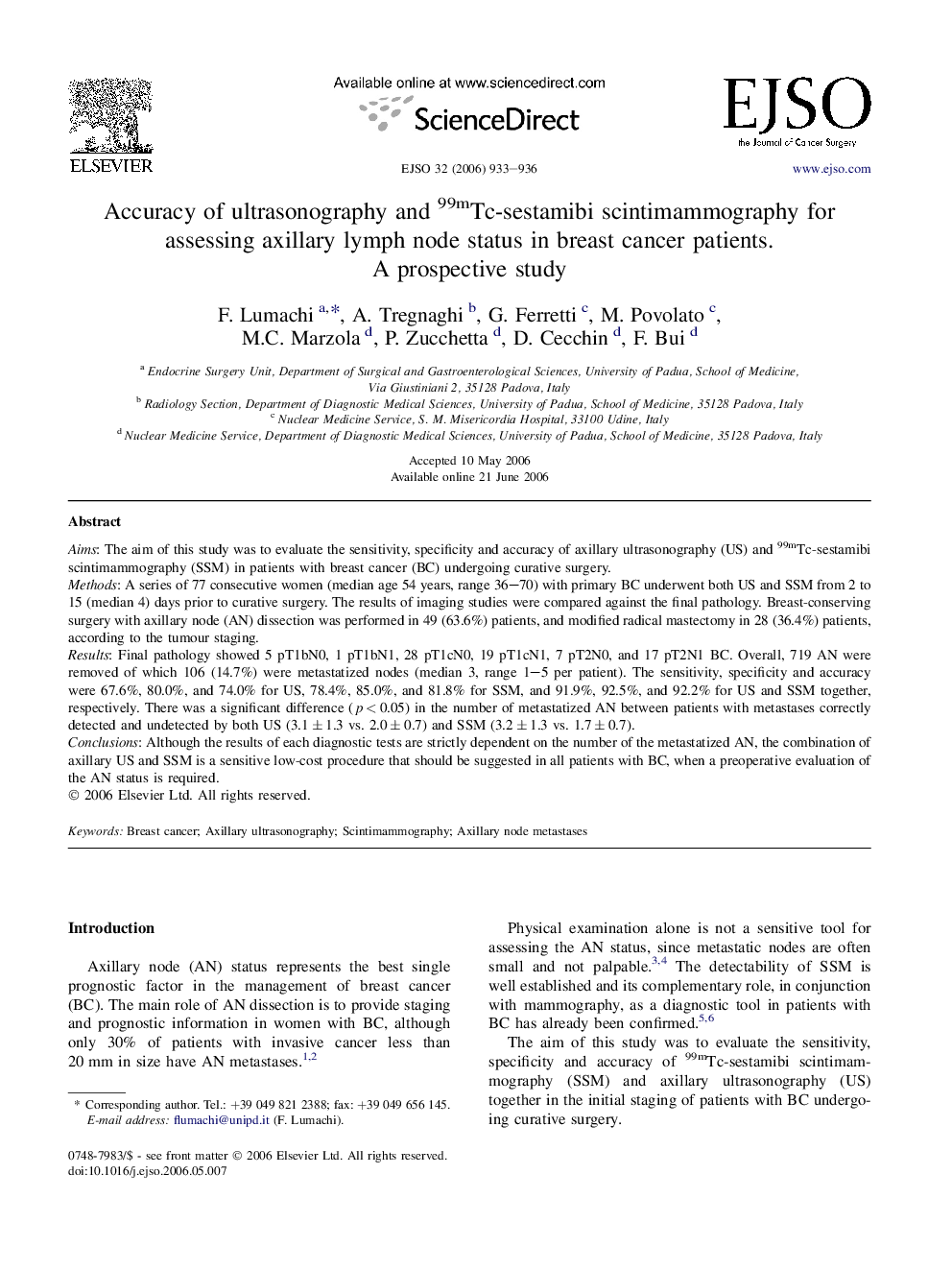| Article ID | Journal | Published Year | Pages | File Type |
|---|---|---|---|---|
| 3988135 | European Journal of Surgical Oncology (EJSO) | 2006 | 4 Pages |
AimsThe aim of this study was to evaluate the sensitivity, specificity and accuracy of axillary ultrasonography (US) and 99mTc-sestamibi scintimammography (SSM) in patients with breast cancer (BC) undergoing curative surgery.MethodsA series of 77 consecutive women (median age 54 years, range 36–70) with primary BC underwent both US and SSM from 2 to 15 (median 4) days prior to curative surgery. The results of imaging studies were compared against the final pathology. Breast-conserving surgery with axillary node (AN) dissection was performed in 49 (63.6%) patients, and modified radical mastectomy in 28 (36.4%) patients, according to the tumour staging.ResultsFinal pathology showed 5 pT1bN0, 1 pT1bN1, 28 pT1cN0, 19 pT1cN1, 7 pT2N0, and 17 pT2N1 BC. Overall, 719 AN were removed of which 106 (14.7%) were metastatized nodes (median 3, range 1–5 per patient). The sensitivity, specificity and accuracy were 67.6%, 80.0%, and 74.0% for US, 78.4%, 85.0%, and 81.8% for SSM, and 91.9%, 92.5%, and 92.2% for US and SSM together, respectively. There was a significant difference (p < 0.05) in the number of metastatized AN between patients with metastases correctly detected and undetected by both US (3.1 ± 1.3 vs. 2.0 ± 0.7) and SSM (3.2 ± 1.3 vs. 1.7 ± 0.7).ConclusionsAlthough the results of each diagnostic tests are strictly dependent on the number of the metastatized AN, the combination of axillary US and SSM is a sensitive low-cost procedure that should be suggested in all patients with BC, when a preoperative evaluation of the AN status is required.
